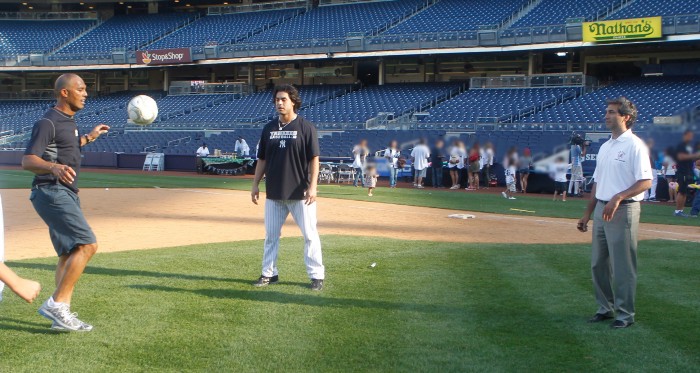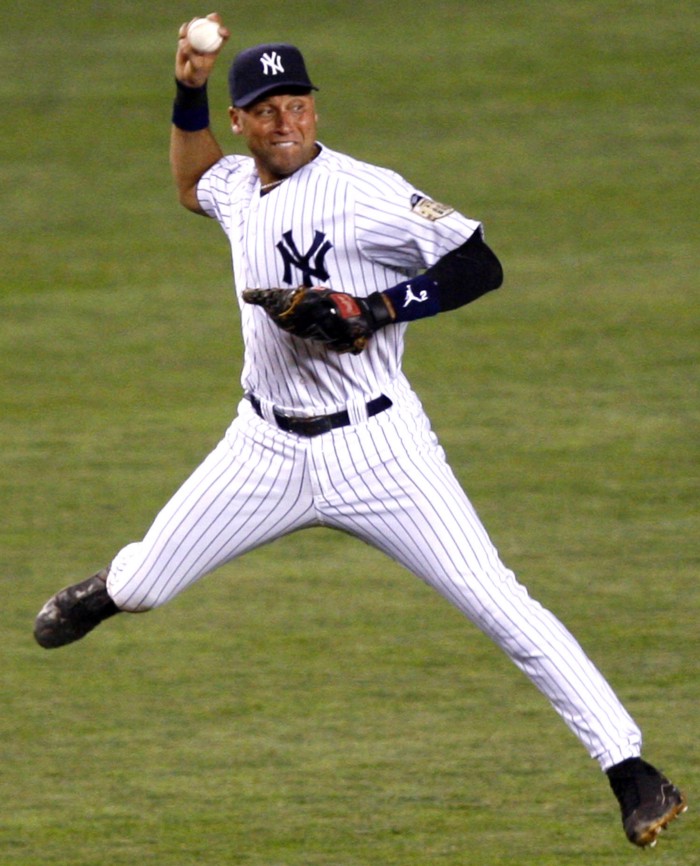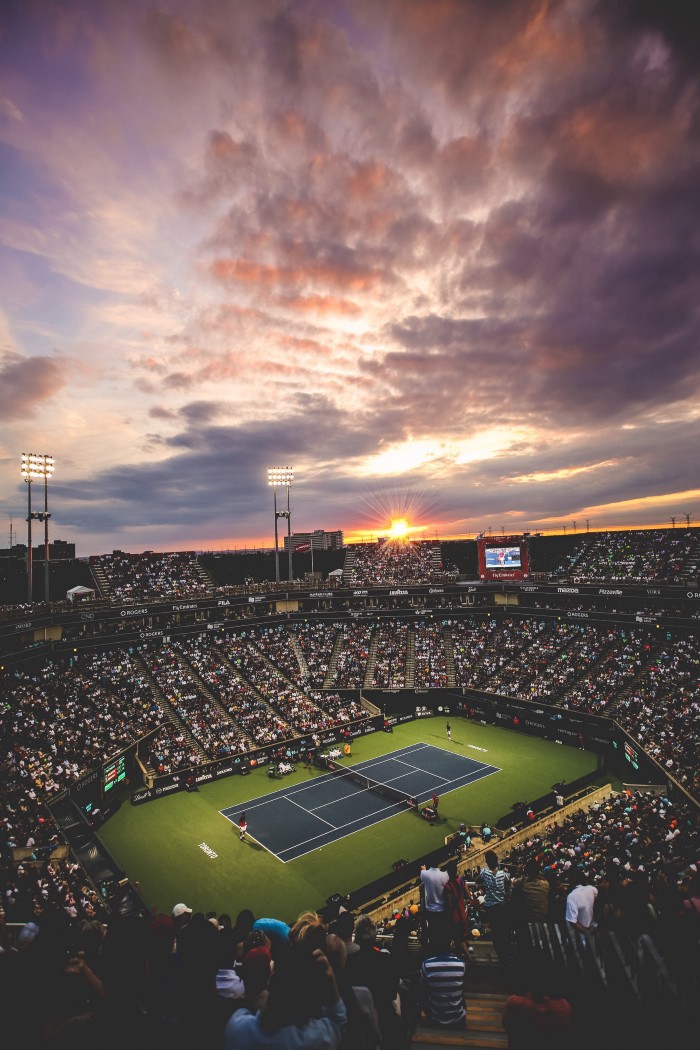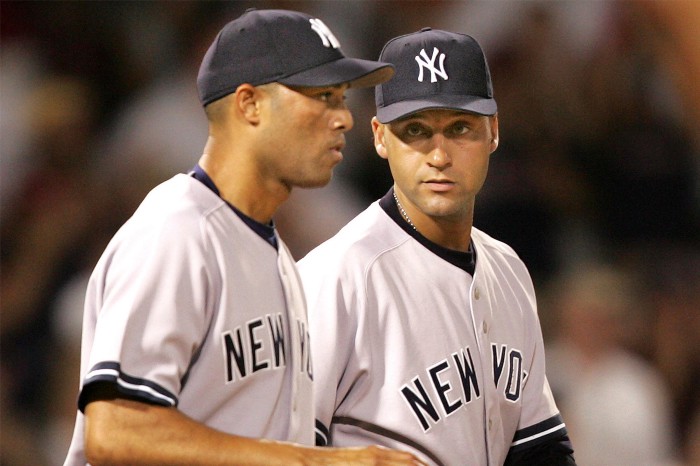Mariano Rivera had a Routine
In the fourth inning of every game, he would recline on a training table in the Gene Monahan Training Room of Yankee Stadium and get an achy body part treated by Yankee athletic trainers. Some days it was his thumb muscles and other days it was his hip. During these treatments, I often sat with Mariano and chatted. Topics ranged from how to execute a cut fastball, the approach of opposing pitchers against our hitters, upcoming family events, even his childhood. No matter what the score, Mo was unpressured during these amazing conversations that took place well before his ninth-inning closing duties. The conversations about his childhood impressed me most because of how Mo differed from the kids I see in my office each and every week.
As a kid, Mo did not have a Rhapsodo device to perfect his cutter movement. Even more surprising, he was not throwing a baseball all that often at a young age. Mo’s home town fishing village in Panama did transform him from a boy to an athlete, but intense baseball would come later. At low tide, receding water would unveil vast flat sand where Mo and the rest of the kids would run endlessly. He played all kinds of games and gravitated to soccer with his pals. I can attest to Mo’s impressive soccer skills as we juggled balls back and forth several times at Yankee Stadium after games.
The young Mariano loved movement, running, and competing! If he was not playing soccer, then he was playing basketball. He was maturing his athletic coordination and his passion for sports. Shockingly, the greatest closer in baseball history didn’t put on a real baseball glove until he was sixteen years old.
Mo’s teammate and fellow Hall of Famer Derek Jeter attended Kalamazoo High School in Michigan. Mo and Derek had early athletic commonalities leading up to their pinstripes careers and 5 World Series championships. Derek like Mo enjoyed multiple sports, he ran cross country in the fall and played basketball in the winter. He made his ninth-grade mark in high school not in baseball, but rather in basketball. His competitiveness developed on the basketball court. In fact, when he tried out for the Kalamazoo Blues select basketball team, Jeter earned his position by out-hustling boys who had more talent. Derek developed composure on the court which earned him the designated shooter responsibility. Jeter’s favorite shot was the three-pointer from the corner. It didn’t matter if Derek had missed twenty shots in a row. If the game was on the line, he wanted the ball! Derek attained physical agility from basketball that would not have occurred with baseball alone. He could move right to catch a grounder because he constantly worked his move to the right in basketball, defending a quick dribbler. His jumping in basketball translated into his signature shortstop jump throw to first base.
Jeter never saw the play performed by another player. He just did it one day in batting practice. “I was just messing around, working on things one day and it came to me,’’ Jeter told the New York Post in 2014. It begins resembling a layup taking off on his left foot, twirling high in the air, and then firing a throw to first against his momentum. Many summarize the play as incredible athleticism and is now often replicated by other shortstops. A few even played the jump throw against Jeter himself.
Derek also developed composure, grit, and resilience from basketball where he was not the most skilled player on the court. The mental edge is what consistently separates first place from second place in all sports. Mo and Derek avoided early baseball specialization, and it was very much to their advantage.
Sport Specialization
Different than Jete and Mo, kids today concentrate on one single sport. They do this as early as 8 years old. Sport specialization is defined as year-round training in a single sport to the exclusion of other sports. At the high school level, there are 7.8 million adolescents playing organized high school sports annually, most of which have specialized in a single sport well before high school. Why are kids not playing multiple sports?
Internal Pressure…
Many players believe if they are not hitting, receiving ground balls, or pitching every day, all year long, they will fall behind compared to their peer competition.
External Pressure…
Parents, coaches, and perhaps friends and neighbors, uncles, and grandparents see the talent and seek titles and championships no matter the cost or the age level. The parents desire for their child to be the next Jacob deGrom or to get a Division 1 scholarship (by the way, Jacob deGrom began playing baseball as a shortstop, and was converted into a pitcher during his junior year at Stetson). This manifests with kids coming into my office with elbow pain and wearing expensive equipment ($200 Oakley sunglasses on their cap, Under Armor cleats, several different aluminum bats, etc). Then mom & dad ask if it would help if I discuss their kid’s condition with their personal trainers, nutritionists, hitting coach, or pitching coach. I refer to this early age exposure to advanced equipment, training, coaches, and competition as early professionalization. The thought process behind both specialization and professionalization is to gain an advantage that could lead to an earlier and higher MLB draft opportunity or highly coveted collegiate scholarships. The same popular belief that 10,000 hours of deliberate practice is required to achieve mastery in skill-based disciplines such as music or chess, and of course sports.
Parents have been shown to be a driving factor leading to sports specialization. The bragging rights of raising an expert level athlete are more powerful than the car you drive, the house you live in, or the other keeping up with Jones’s features.
What Does the Research Show in MLB Players?
Are more training hours, better equipment, and early competition better for our kids? I am not only a surgeon who puts broken elbows back together, but I am also a researcher. My colleagues and I performed a study to determine if playing a single sport in high school was beneficial or detrimental to professional baseball players. First-round and second-round MLB draft picks from 2008 to 2016 were analyzed as to whether they participated in more sports than just baseball during high school. From a pool of 746 drafted players, 32% were multisport and 68% were single-sport. The multisport high school athletes played in significantly more professional baseball games than single-sport players. In addition, single-sport high school athletes got hurt more while playing professional baseball.
Single-sport pitchers also had a higher prevalence of shoulder and elbow injuries (75% vs 56%) and were twice as likely to have recurrent elbow injuries (33% vs 17% recurrence). Despite the notion that sports specialization will enhance your road to professional baseball, the multisport athletes demonstrated an edge over the single-sport athletes during their professional careers. Therefore, young athletes interested in a baseball career at the highest professional level can minimize their risk of overuse injuries and have the potential for greater future longevity by participating in multiple sports during high school.
Beyond Baseball
Let’s consider a non-team sport such as tennis. On the surface, tennis seems to have finite but challenging technical skills that would benefit from early specialization and competition. Serve, groundstrokes, and volley. A boy with dark brown wavy hair and tan skin stood out amongst his peers. The boy’s mom was a tennis coach, but she refused to coach him. Instead, he kicked soccer balls with his mom when he learned to walk. Sundays were reserved for squash with his father. He enjoyed skiing, wrestling, swimming, and skateboarding. He played basketball, handball, tennis, table tennis, badminton over his neighbor’s fence, and soccer at school. This boy was the definition of sports diversification.
He played for fun and did not have external pressure to be number 1. Mom and dad encouraged him to sample his wide array of sports. Nearing his teens, the boy began to gravitate more toward tennis. The boy enjoyed the competition and his friends. So when his tennis instructors advanced him to a group with older players, he asked to move back so he could stay with his friends. After all, part of the fun was hanging around after his lessons to argue soccer and enjoy music. By the time he finally gave up other sports — soccer, most notably — to focus on tennis, other kids had long since been working with strength coaches, sports psychologists, and nutritionists. But this posed no problem to his development in the long run. As of this writing, Roger Federer is 39 years old, ranked number 4 in men’s singles tennis, and has won more grand slam titles than any other player in history! He gives credit to the wide range of sports he played at a young age for his athleticism and brilliant hand-eye coordination,
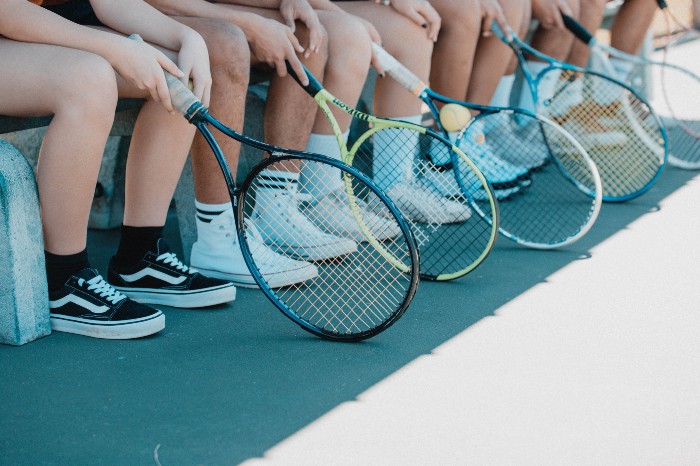
Sampling and Sports Diversification
If we rewind the clock on pools of current maturated top tier athletes, we discover at their younger age they enjoyed less deliberate practice in their chosen sport. Instead, they tended to sample a variety of sports, and usually in an unstructured environment. These athletes were unknowingly building physical and mental proficiencies that would not otherwise develop in their single sport. Later on, these athletes then commit to their chosen sport and seem to accelerate past their peers. A recent study supported this concept when 735 boys aged 6 to 12 years old, who participated in either a single sport or multiple sports were analyzed. The older multisport subgroup had greater strength and coordination compared to the single-sport athletes.
Basketball research mirrored our work in baseball. NBA first-round draft picks who remained multisport athletes in high school had longer careers and less major injuries than matched peers who specialized in basketball early. Research in many sports resembles our findings in baseball. In soccer, for example, a cohort of players at age eleven was matched for skill and tracked for two years. Those who participated in more sports and non-organized soccer, in contrast to organized soccer-specific training, improved more when re-evaluated at age thirteen. Findings like these have now been sprouting in ranges of sports, from hockey to volleyball.
More Early Sports Specialization Facts
The tragedies of sports specialization are hidden in our society’s ever-popular thirst for success. Early sports specialization causes more than injury or proficiency, it is also associated with increased psychological stress and burnout. Athlete burnout is a psychological syndrome that encompasses a reduced sense of accomplishment with emotional/physical exhaustion. A group of fellow sports medicine specialists and I examined a large group of young athletes and demonstrated that the mean age of sport specialization for study participants was 8.1 years, and 47% of the athletes considered quitting their sport within their most recent season.
Other researchers found that athletes exposed to multiple sports enjoyed sports more and dropped out less frequently than early specialized athletes. Enjoyment of the sport is a robust predictor of long-term participation and eventual achievement.
I have the privilege of doing pre-contract physical exams on potential Yankee players. There is always an excitement and enthusiasm for these players who are going to wear pinstripes and hopefully one-day parade…
In addition to asking about injury history and special treatment needs, I ask if they played multiple sports in high school. One recent player told me he played football in high school. I asked if it made him a better baseball player. His answer, “definitely”. How does it make you better? It makes you a better teammate. It teaches you to play for each other to win. He went on to explain that in fact, most pro MLB players who played multiple sports in high school can pick out those who did not, very easily!
Opportunities
In a study I performed in 2012, 31% of baseball coaches, 28% of players, and 25% of parents did not believe that pitch counts or overuse to be a risk factor for an elbow injury. It is important to remember that although many coaches and parents encouraging specialization may not be acting in their young athlete’s best interest, they are well-intentioned; they want their child to become as good at their given sport as possible. However, they may not fully understand the evidence behind sport specialization. Therefore, education and building a culture of sports diversification is one of our strongest therapies to keeping our kids on the field and happy.
Let’s advocate for sports diversification. After all, it worked for Hall of Famers Derek Jeter and Mariano Rivera!
Specialization Education Box Score
· There is no strong evidence that early sports specialization is required to achieve elite athletic status in throwing sports.
· Early sports specialization is associated with increased injury risk in general, but especially in the throwing athlete.
· Athletes who have specialized early have increased rates of burnout and lower rates of lifelong sports participation.
· Parents and coaches are strong influencers the developing athlete’s choice to specialize
· Athletes who diversify their sports, benefit both physically and psychologically as well as progress more frequently to elite levels of play.


